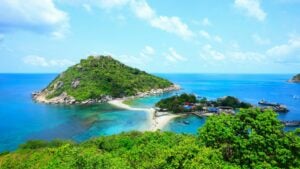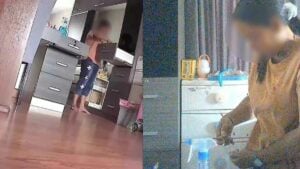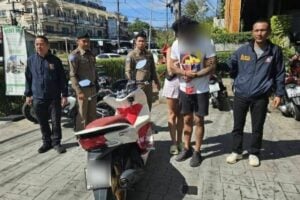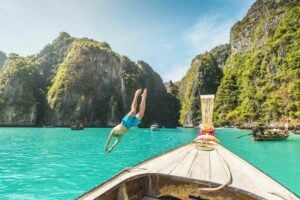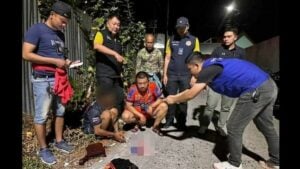How to protect your car from Thailand’s summer heat

Thailand’s summer brings intense heat and humidity, posing challenges for vehicles with effects ranging from damaged paintwork to strained engine performance. Protecting your car during these extreme conditions is crucial for maintaining its longevity, ensuring safety, and staying comfortable on the road. This guide provides practical tips and expert advice to keep your car in top shape throughout the hot season.
Essential vehicle preparations for hot weather

Rising temperatures make it essential to prepare your vehicle for hot weather. Regular maintenance helps prevent breakdowns and keeps your car safe and comfortable during summer drives.
Choosing high-quality coolants and fluids
To protect your vehicle from Thailand’s intense summer heat, choose high-quality coolants and fluids. Use coolants designed for hot climates, offering extended protection against extreme temperatures, corrosion, and boil-over up to 265°F (129°C).
Premium lubricants are also essential, as they reduce friction and wear in high heat. Regularly check your transmission fluid for changes in colour or odour since heat can cause it to break down faster. By selecting the right coolants and fluids, you can boost your vehicle’s performance and durability during the scorching summer months.
Regular oil checks and changes
Regular oil checks and changes are essential for keeping your vehicle running smoothly in Thailand’s hot climate. The intense heat can cause engine oil to thin and break down faster, reducing its ability to protect engine parts. Here are the tips to combat this.
- Check oil levels often, letting the engine cool for 5–10 minutes before measuring.
- Use high-quality synthetic oil for better performance in extreme heat.
- Follow the manufacturer’s recommended oil change schedule, but consider more frequent changes during summer.
- Inspect the oil for contamination or discolouration, which might signal the need for an early change.
By keeping your oil clean and at the right level, you can prevent engine overheating and reduce wear, ensuring your vehicle performs well in Thailand’s scorching temperatures.
Keeping your car cool and comfortable

Keeping your car cool during Thailand’s hot summer is essential for passenger comfort and protecting your car’s interior. This guide offers simple tips and key steps to help you maintain a pleasant environment inside your vehicle throughout the summer.
Maintaining the air conditioning system
Maintaining your car’s air conditioning system is essential for staying cool in Thailand’s hot climate. Here’s how to keep your AC running efficiently:
- Check the cabin air filter once a year or every 15,000–30,000 miles, and replace it if clogged to improve airflow and prevent mould.
- Have a mechanic inspect refrigerant levels during routine servicing to ensure the system cools properly.
- Clean the condenser regularly to remove debris that can block airflow and reduce cooling performance.
- Run the AC on full blast for 10 minutes each week, even in cooler months, to keep the compressor in good shape.
- Schedule professional AC servicing every two years to recharge the system, check for leaks, and ensure all components are working well.
By following these tips, you can extend the life of your AC system, avoid breakdowns, and stay comfortable during Thailand’s scorching summer.
Importance of shaded parking
Parking in the shade is essential for protecting your vehicle from Thailand’s intense summer heat. Cars parked in direct sunlight can reach dangerously high temperatures of up to 46.7°C within an hour, while shaded vehicles stay much cooler. Parking in the shade not only keeps the interior more comfortable but also prevents damage to your car’s interior from prolonged exposure to heat and UV rays.
If shaded parking isn’t available, use sunshades on the windscreen and windows to reduce heat buildup. Slightly opening the windows, when it’s safe, can also improve airflow and reduce the greenhouse effect inside the car.
For businesses and property owners, installing parking shades offers multiple benefits, such as keeping customers happy, lowering vehicle maintenance costs, and reducing the need for excessive air conditioning in vehicles, which can save energy.
Caring for your car’s interior

Taking care of your car during Thailand’s hot summer is important to keep it looking good and working well. The interior needs extra care to handle the heat. Here’s how to protect it.
Reflective dashboard covers
Reflective dashboard covers are a must-have for protecting your car’s interior from Thailand’s intense summer heat. These covers block harmful UV rays and reduce heat buildup, helping to keep your dashboard in good condition. By shielding it from sunlight, they prevent fading and cracking, extending the life of your car’s interior.
Here are some key benefits of reflective dashboard covers.
- They keep the interior cooler, easing the load on your air conditioning.
- Custom-fit designs align perfectly with air vents and sensors for full protection without affecting functionality.
- Non-slip backing keeps the cover in place while driving for added safety.
- They come in various styles and materials, letting you personalise your car while protecting its resale value.
When choosing a reflective dashboard cover for Thailand’s climate, look for heat-resistant materials with UV protection for maximum durability under the scorching sun.
Seat material and cover selection
Ensuring tyre safety in extreme heat

Tyre safety is critical in Thailand’s extreme heat, where high temperatures can cause rapid wear and increase the risk of blowouts. Regular checks and proper maintenance help ensure your tyres stay reliable, improving safety and performance on the road.
Regular tyre pressure checks
Regularly checking your tyre pressure is essential in Thailand’s hot climate because temperature changes can greatly affect it. For every 10°C increase in temperature, tyre pressure can rise by about 1–2 PSI. To keep your vehicle safe and running well:
- Check tyre pressure every 2–4 weeks, preferably when tyres are cold.
- Use a reliable pressure gauge and compare the readings to the manufacturer’s recommended PSI.
- Adjust the pressure as needed, making sure all tyres—including the spare—are properly inflated.
- Consider installing a Tyre pressure monitoring system (TPMS) for real-time pressure alerts.
Keeping your tyres at the correct pressure enhances safety, improves fuel efficiency, and extends tyre life. Even if your vehicle has TPMS, it’s still wise to perform manual checks as an extra precaution.
Monitoring tyre condition
Thailand’s intense heat can affect tyres significantly, making regular checks essential for safety and durability. High temperatures speed up rubber wear, increase the risk of blowouts, and reduce tyre performance. Here’s how to protect your tyres in Thailand’s hot climate:
- Check tyres often for wear, cracks, or bulges, especially on the sidewalls.
- Monitor tread depth to ensure proper grip, especially during the rainy season.
- Watch for uneven wear patterns that might signal alignment or suspension problems.
- Use a tyre temperature monitoring system (TMS) to track heat buildup and catch early signs of tyre issues.
- Rotate tyres regularly to ensure even wear and extend their lifespan.
- Avoid overloading your vehicle, as extra weight causes tyres to heat up faster.
Taking care of your car tyres improves safety, fuel efficiency, and overall vehicle performance in Thailand’s challenging driving conditions. Remember, tyres are your car’s only contact with the road, so keeping them in good shape is crucial.
Keeping your car in top condition during Thailand’s hot summer requires proactive care. Regular maintenance, such as checking tyre pressure, using high-quality coolants, and monitoring oil levels, ensures safety and performance. Protecting the interior with reflective dashboard covers, breathable seat materials, and proper air conditioning upkeep enhances comfort while reducing wear from extreme heat. Taking these steps not only extends the lifespan of your vehicle but also improves fuel efficiency and driving safety. For a broader look at Thailand’s evolving transportation landscape, explore Thailand’s journey from traffic jams to green mobility solutions.
FAQ for how to protect your car from Thailand’s summer heat
Why is it important to prepare my vehicle for hot weather?
Preparing your vehicle for hot weather is crucial to prevent breakdowns, maintain safety, and ensure comfort during drives. High temperatures can lead to issues such as damaged paintwork and strained engine performance.
How often should I check and change my engine oil?
Regular oil checks are essential, especially in hot climates where oil can thin and break down faster. It's advisable to check oil levels frequently and follow the manufacturer's recommended oil change schedule, considering more frequent changes during summer.
What can I do to keep my car cool inside?
To maintain a comfortable interior temperature, regularly check and maintain your air conditioning system, use sunshades when parked, and consider reflective dashboard covers to block UV rays.
What are the benefits of using reflective dashboard covers?
Reflective dashboard covers block harmful UV rays, reduce heat buildup, prevent fading and cracking of the dashboard, and help maintain a cooler interior temperature.
What should I look for when monitoring tyre condition?
Check for signs of wear, cracks, or bulges on tyres, monitor tread depth for proper grip, watch for uneven wear patterns that could indicate alignment issues, and rotate tyres regularly to extend their lifespan.







